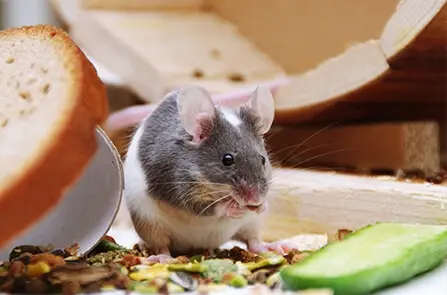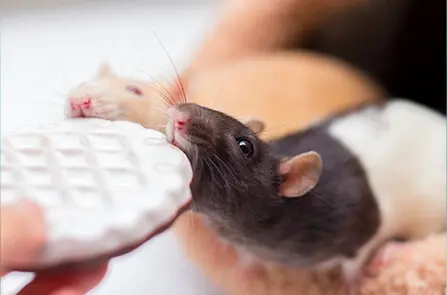Everything You Should Know About Mus Musculus Lifespan!

Are you thinking of adopting a new house mouse? Here is what you should know before keeping them as your pet.
Mus Musculus is a little social and curious creature that loves exploring new things. They are generally known as mice that belong to the genus Muroid Rodents. They have a nocturnal habitat and spend their night exploring things and sleeping during the day. Besides this, they are chronic in making burrows and niches for fun. They like chewy toys that protect their teeth from overgrowth. Their distribution originated from the Mediterranean region to China, but now they are found all over the world. Let’s move forward and understand the Mus Musculus Lifespan.
Classification Of Mus Musculus
They are generally known as Mice or House Mouse. They belong to the family Muridae, which is considered a subfamily of rodents, domain Eukaryota, and has a subfamily Murinae. The scientific name of these mice is MUS, which belongs to the phylum Chordata and kingdom Animalia. Besides this, below are some common mouse species in Norway.
- House Mouse
- Brown Rats
- Common Shrew
- Wood Mouse
- Bank Vole
- Yellow-necked mouse
- Muskrat
Physical Appearance OF House Mouse
- The average Mus Size ranges from 65-95mm long, and their tail is 60-105mm long.
- The fur of these house mice varies from light brown to black.
- Their belly is white and buffy, with little fur, and While in captivity, they have a longer tail and a little darker fur.
- The average mus weight varies from 12-30g.
Habitat & Behavior OF Mus Musculus
The habitat region of these mice is terrestrial, while their terrestrial biomes are forest. They have an association with humans and, therefore, live close to them. You can also find them in fields, wooden areas, and forests. While in captivity, they need a suitable habitat with solid floors that can be cleaned easily, like a glass aquarium. A large, ample space for them will allow them to roam and explore, resulting in happy mice. Because they love climbing and jumping, thus providing them with a multi-level cage is recommended.
These mice habitually burrow tunnels and chambers for nesting and food storage. They are nocturnal and stay active during the night. They are good runners and swimmers and show jumping and climbing behavior. They live in colonies or territories.

Understanding The Mus Musculus Lifespan
House mice are playful and curious creatures. The most asked question about them is how long they live. Let’s simplify it: The longevity of these mice depends upon their habitat. There is a different lifespan for those living in captivity or the wild.
Mus In the Wild: In the wild, these mice’s lives are always in danger. There is a constant threat of predators like owls, hawks, and snakes, who consider these mice their tasty meal. Besides this, there is a need for more food and shelter. In the wild, they have to bear extreme weather conditions. All these factors combine and become a reason for their shorter lifespan. The average Mus Musculus life span in the wild ranges from 12-18 months.
Mus In Captivity: Conversely, things are quite different for those living in captivity and laboratory mice. They don’t have to face food scarcity, stress, and environmental fluctuation. They have a constant food supply, freshwater availability, and a stress-free environment in captivity. The average lifespan of these mice in captivity is two years, while in some exceptional cases, they can live up to 5 years. Giving your pet mice a well-balanced and nutritious food is advised, but be aware of the quantity. It will help your pet live a longer, happier, and healthy life.
Scientists’ Suggestion: Scientists have conducted various experiments to determine which factor will help enhance the lifespan of these mice. In the end, they have suggested that giving your mice a well-balanced, nutritious, and caloric food will help to enhance their longevity. Besides this, a positive environment without any stress will also help to promote their longevity.
Do You Know: The world’s most giant mice are Phoberomys and Josephoartigasia.The estimated weight of Phoberomys is 5 pounds, and it is 14 feet long.
Understanding The Mus Musculus Gestation Period
The house mouse breeds throughout the year and has a polygynous mating system. Besides this, it has also been seen that the mice living in the wild have a specific breeding season ranging from April to September.
They have an estrus cycle of about 4-6 days and can give birth to 5-10 litters in a year. Their gestation period is 14-21 days. Each litter results in 3-14 baby mice that are born blind and without any fur. They take days to become fully furred. After 14 days of their birth, they start opening their eyes. They start weaning in weeks and finally reach maturity in 7 weeks.
Do You Know: Brown rats are considered the most enormous rats in Norway. They belong to the mouse family and have an average length of 16 inches.
Summing Up!
Mus Musculus, also known as the house mouse, is known because of its curious and exploring nature. These mice are nocturnal and distributed from the Mediterranean region to China. Different species of these mice exist in Norway, such as house mice, brown rats, and wood mice. While searching for a Mus Musculus lifespan, it is essential to know that their longevity depends upon the environment and the factors where they live.
In the wild, their average life is about 12-18 months, while in captivity, the average life is two years. In the wild, there are constant changes in predators, extreme environments, and food shortages, so those living there have a shorter lifespan. In addition, giving them a well-balanced and nutritious meal will ensure their longevity.
Frequently Asked Questions?
Yes, the female Mus Musculus takes 19-21 days to give birth to the litter.
No, they are mammals and, therefore, don’t lay eggs.
They could have more than six babies every three weeks, meaning they can give birth to a second litter after every 25 days.
Baby mice need their mothers, who can nurse them. Otherwise, they will die quickly.
They could have 3 -14 babies at the same time.
In the wild, they could live for 12-18 months, while in captivity, they could live for two years.





